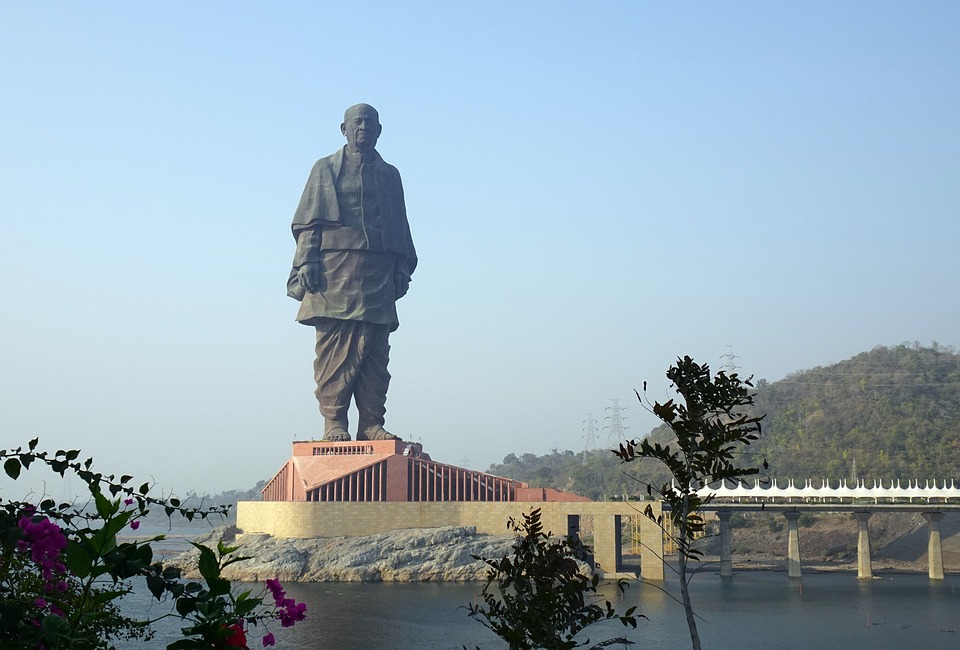The Statue of Unity is a colossal monument located in the state of Gujarat, India. It is a tribute to Sardar Vallabhbhai Patel, an instrumental figure in India’s struggle for independence and the country’s first Deputy Prime Minister and Home Minister. This iconic statue was inaugurated on October 31, 2018, and quickly became a symbol of national pride and unity.

Designed by Indian sculptor Ram V. Sutar, the Statue of Unity stands at an astounding height of 182 meters (597 feet), making it the tallest statue in the world. It is situated on Sadhu Bet Island, near the Sardar Sarovar Dam, providing a picturesque view of the Narmada River and surrounding landscapes.
The construction of this grand monument was a massive undertaking, with thousands of workers and engineers collaborating on the project. The statue’s bronze panels were crafted in China and later assembled in India. Its overall design showcases Sardar Patel in a dignified posture, wearing a traditional Indian dhoti and shawl.
Apart from its visual grandeur, the Statue of Unity houses several attractions and facilities for visitors. The statue’s base includes an exhibition hall, displaying artifacts and information about Sardar Patel’s life and his contributions to India’s independence movement. Visitors can also take a lift to an observation deck inside the statue’s chest, offering a breathtaking panoramic view of the surrounding area.
The construction of the Statue of Unity was met with mixed reactions from different quarters. Supporters praised it as a fitting tribute to Sardar Patel’s legacy and a symbol of national unity. They believed that such a monumental structure would attract tourists and generate economic opportunities for the region.
On the other hand, critics raised concerns about the massive costs involved in the statue’s construction and maintenance. They argued that the funds could have been better utilized for other development projects in the country.
Despite the debates, the Statue of Unity has become a popular tourist destination, drawing visitors from across the country and around the world. The site also holds cultural and educational significance, offering insights into India’s rich history and the contributions of its leaders.
The monument has sparked interest in the development of the surrounding area and has led to the establishment of various amenities and infrastructure to cater to tourists. It has become an essential component of the Gujarat government’s efforts to promote tourism and cultural heritage in the state.
Beyond its physical presence, the Statue of Unity holds symbolic importance as a representation of unity and the spirit of India’s freedom struggle. It pays homage to Sardar Patel’s vision of a united India, and its location overlooking the Narmada River signifies the river’s significance in India’s cultural and historical context.
In conclusion, the Statue of Unity stands tall as a tribute to Sardar Vallabhbhai Patel and serves as an iconic landmark in India. With its remarkable height and architectural brilliance, it draws people from all walks of life, inspiring national pride and unity. The monument’s cultural and historical significance, combined with its visual splendor, continues to make it a prominent symbol of India’s rich heritage and a must-visit destination for tourists and history enthusiasts alike.
